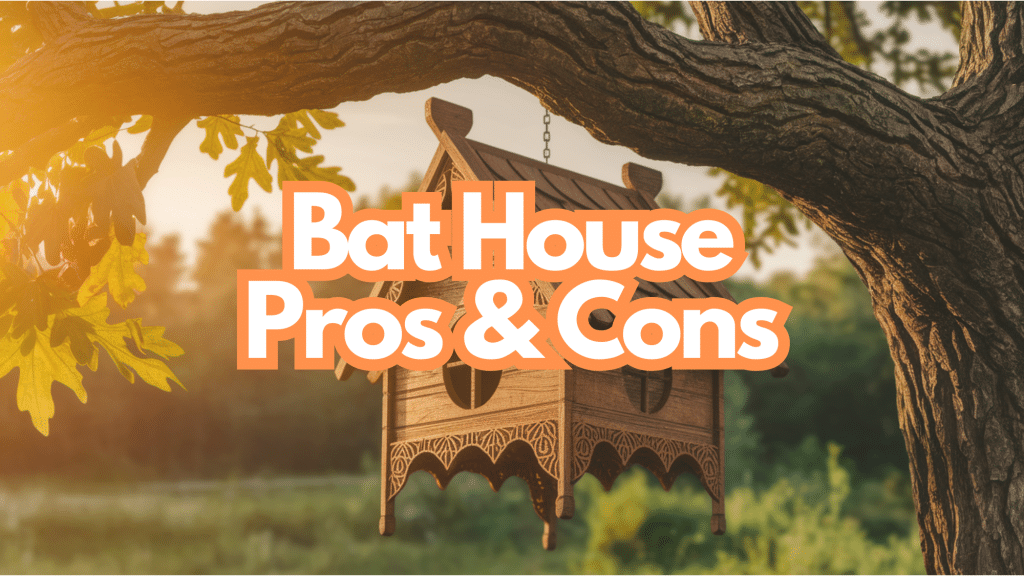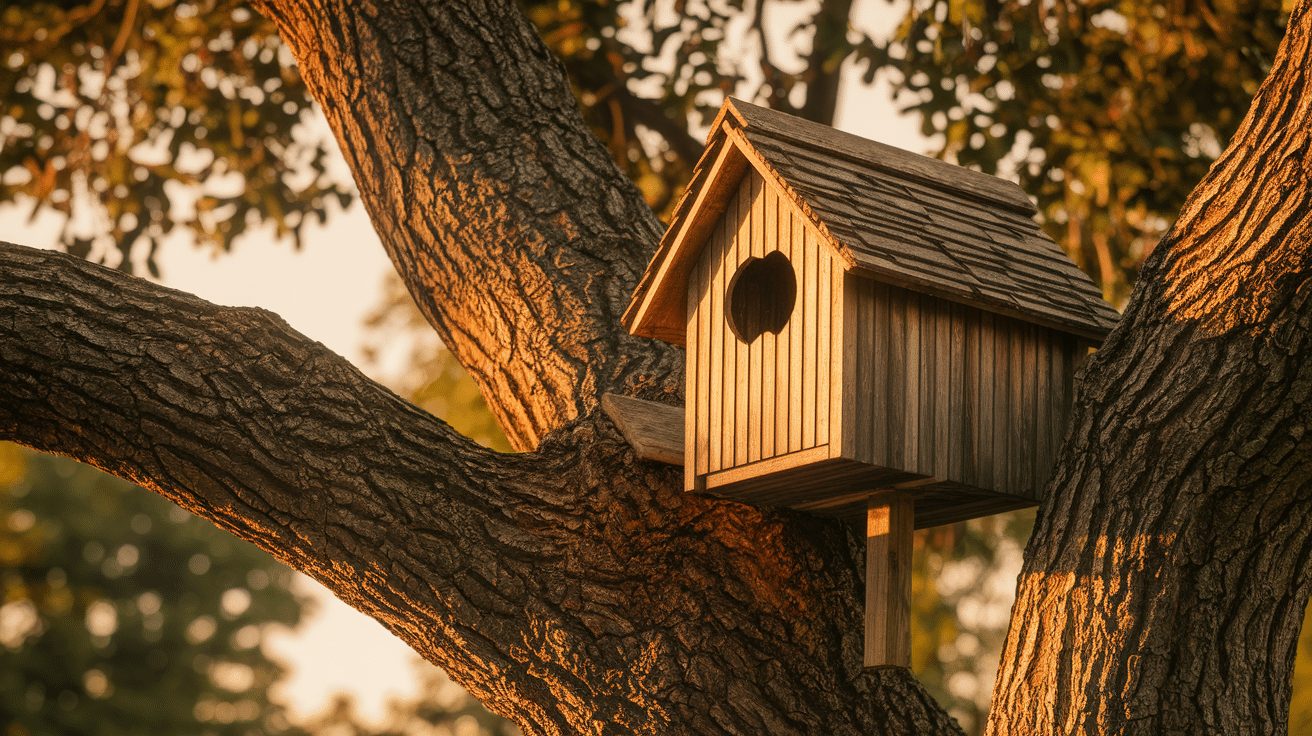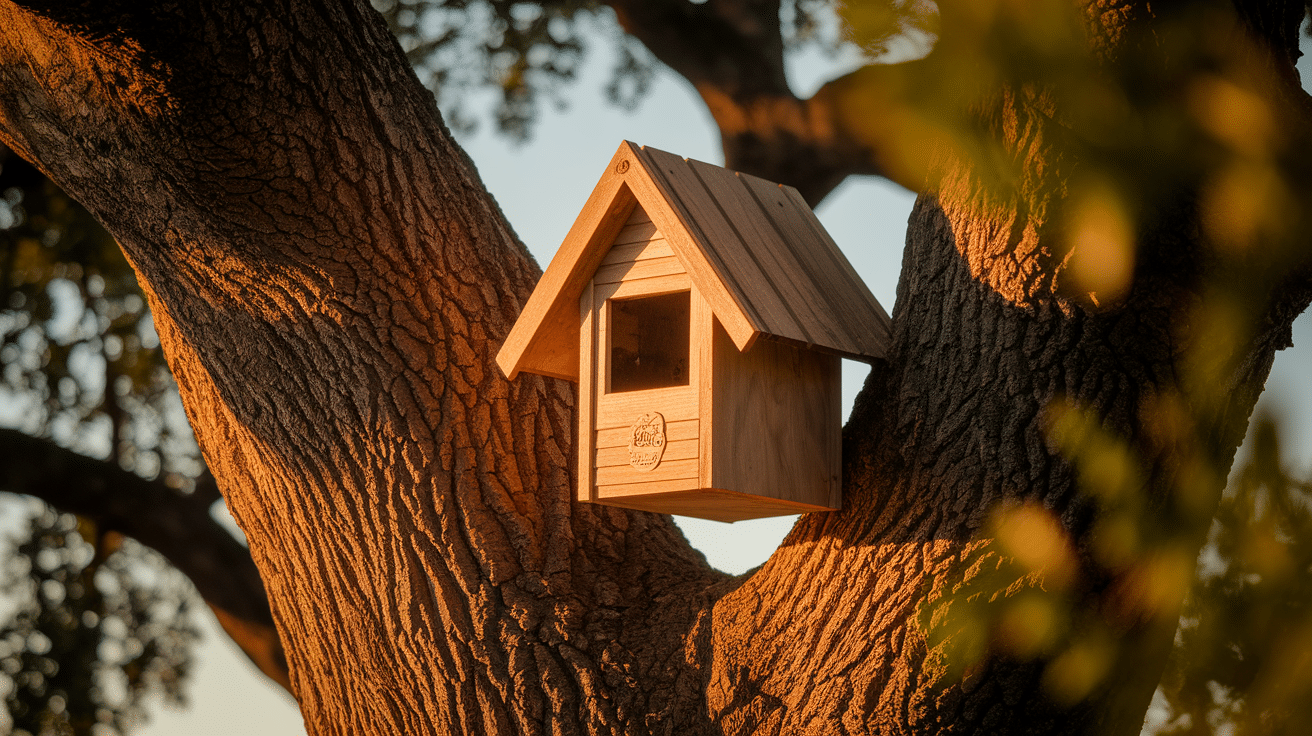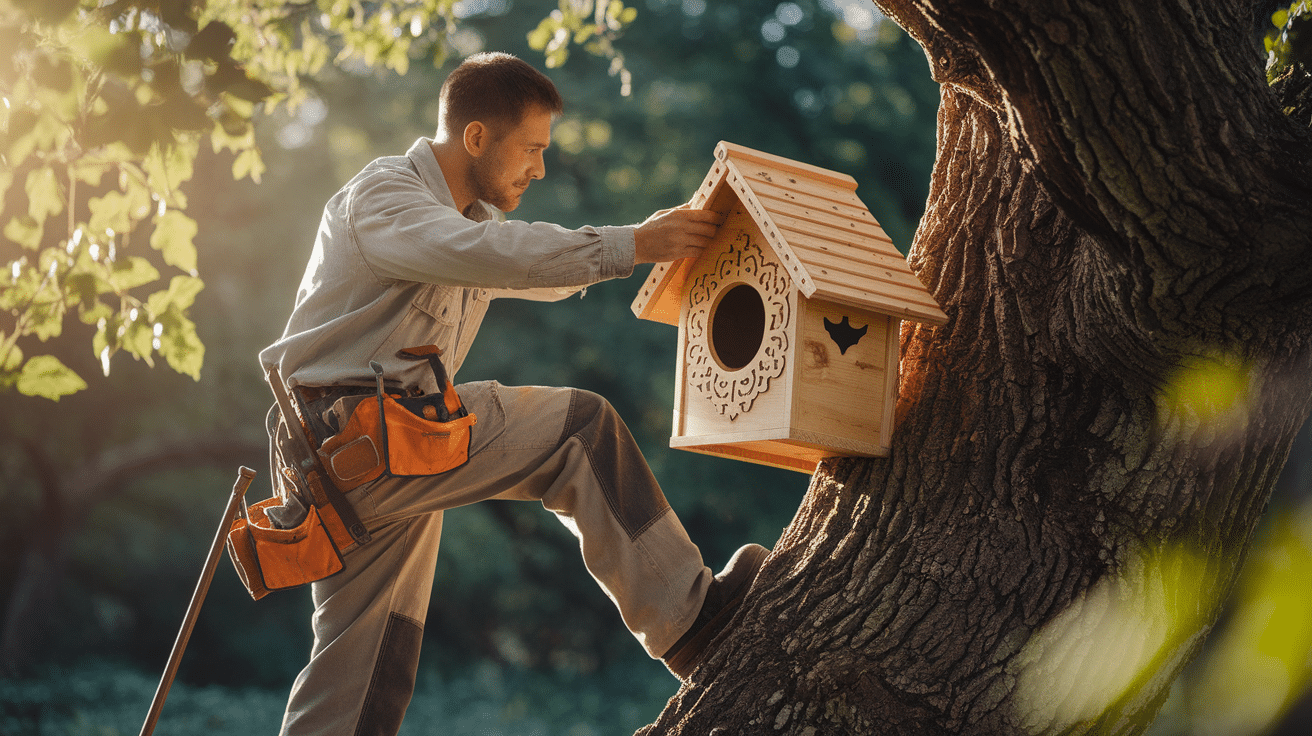Flying silently through the night, bats play a crucial role in our world that often goes unnoticed. These incredible winged mammals are more than just mysterious creatures of darkness.
They’re essential partners in maintaining balanced ecosystems, protecting crops, and keeping insect populations in check.
This article shows how simple wooden structures can become lifelines for these remarkable animals, offering them safe spaces to rest, raise families, and continue their vital work in nature’s grand design.
Understanding Bat Houses
Bat houses are specially designed structures that provide artificial roosting spaces for these remarkable mammals. Typically constructed from wood, these houses mimic the natural shelter bats seek in tree bark, rock crevices, or caves.
The basic structure includes:
- Narrow, vertical chambers
- Rough interior surfaces for gripping
- Dark, warm environments
- Specific dimensions to accommodate bat colonies
The primary purpose is to offer a safe, stable environment where bats can rest during daylight hours, raise their young, and find protection from predators and harsh weather conditions.
Advantages of Installing Bat Houses
Installing bat houses offers a range of opportunities to contribute to ecological balance, support local wildlife, and promote environmental awareness within communities.
1. Environmental Benefits
Bats stand as remarkable natural controllers of insect populations. A single bat can devour up to 1,000 mosquitoes within 60 minutes, establishing their critical role in ecological management.
These winged mammals contribute significantly to environmental sustainability through their unique capabilities of pollination, seed distribution, and maintaining balanced ecosystems.
2. Garden and Agricultural Advantages
Gardeners and agricultural professionals recognize bat houses as transformative tools for sustainable landscape management. These structures provide natural mechanisms for protecting crops from destructive insects.
By creating safe habitats, farmers can reduce reliance on chemical treatments, fostering healthier agricultural environments and supporting more robust plant growth and productivity.
3. Conservation Impact
Installing bat houses represents a direct method of wildlife protection. These structures offer critical support for bat populations confronting significant habitat challenges in modern landscapes.
Individuals can actively participate in conservation efforts by creating micro-refuges that protect and sustain local bat species, particularly in urban and suburban regions.
4. Community Education Opportunities
Bat houses serve as practical focal points for wildlife education in communities. They create tangible connections to local ecology and promote greater appreciation for these often misunderstood creatures.
These installations can function as living classrooms, allowing people to witness ecological principles in action while dispelling common misconceptions about bats.
Potential Disadvantages of Bat Houses
While bat houses offer great benefits, there are important factors to consider to ensure they provide an effective and welcoming environment for bats.
Installation Difficulties
Successful bat house placement demands meticulous strategic planning. Careful consideration of location, height, and environmental conditions significantly influences the likelihood of attracting resident bats.
Proper installation requires understanding specific requirements like optimal mounting techniques, temperature regulation, predator protection, and minimizing exposure to harsh environmental elements.
Limitations
Not all bat species will immediately or automatically inhabit artificial structures. Occupancy depends on multiple factors, including local ecological conditions and specific habitat preferences.
Patience becomes crucial, as bat populations might take extended periods, potentially months or years, to locate and establish residency in newly created habitats.
Maintenance Issues
Sustained care ensures bat houses remain attractive and functional habitats. Regular monitoring helps prevent parasite accumulation and identifies potential structural deterioration.
Comprehensive maintenance involves systematic cleaning, structural assessments, and periodic replacements to guarantee continued effectiveness as safe, welcoming environments for bat populations.
Proximity Concerns
Some individuals may experience apprehension about encouraging bats to live near human habitations. Despite their ecological benefits, misconceptions about disease transmission can create resistance.
Close proximity to bat colonies might introduce considerations regarding excrement accumulation beneath roosting sites, which requires management to maintain cleanliness in surrounding areas.
Tips for Successful Bat House Implementation
Follow these guidelines to create an ideal bat habitat, ensuring proper sunlight, safety, and accessibility for successful colony establishment.
- Position houses facing southeast for morning sun exposure
- Ensure at least 6-8 hours of direct sunlight
- Mount on poles or buildings, away from tree branches
- Paint dark colors to absorb heat in cooler regions
- Avoid areas with excessive artificial lighting
- Maintain a clear flight path to the house entrance
Conclusion
Small actions can spark big changes in wildlife conservation. By understanding and supporting bat populations through thoughtful habitat creation, we open doors to healthier environments.
Each bat house represents hope for these misunderstood creatures, giving them a chance to thrive and continue their silent but powerful work.
As we learn more about these incredible flying mammals, we realize that protecting them isn’t just about saving one species, it’s about maintaining the intricate web of life that connects us all.
Frequently Asked Questions
How Long Does it Take for Bats to Use a New Bat House?
Bats May Take Weeks to Two Years to Discover a New House. Local Bat Populations, Habitat Conditions, and Location Significantly Impact Their Arrival and Settlement.
How Many Bats Can Live in a Single Bat House?
A Well-Designed House Can Support 50-100 Bats. Size, Design, and Environmental Conditions Determine the Number of Bats that Can Comfortably Live in The Structure.
Are Bat Houses Safe for Humans and Pets?
Bat houses keep bats separate from living spaces. When properly installed, they minimize direct contact. Always observe bats from a distance and avoid handling them.
What Should I Do if No Bats Move In?
Be patient. Verify house specifications, check sunlight exposure, ensure nearby water sources, and consult local wildlife experts for region-specific guidance.























